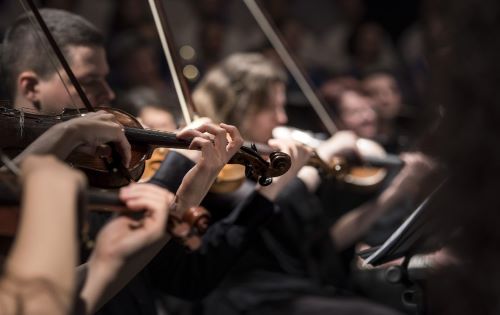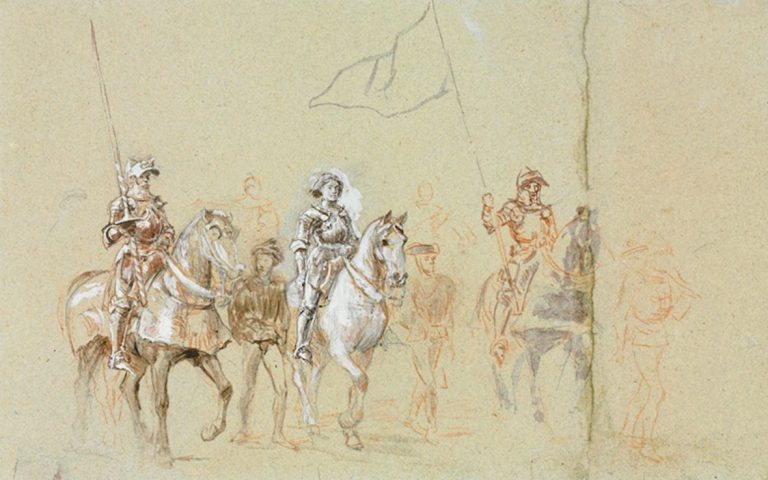

Do you ever wonder where today’s musical instruments came from? It turns out that they have a long and rich history. Music has been an integral part of human life since ancient times. Musical instruments have accompanied us throughout our history through periods of joy and sorrow. From the primitive flutes and drums used by early humans to modern electronic synthesizers, musical instruments have evolved along with society. This article aims to provide a brief overview of the history of musical instruments. But first, let’s define what a musical instrument is.
What is a Musical Instrument?
A musical instrument is any type of device that produces sound through mechanical, electrical, or digital means. This includes stringed instruments such as guitars and violins, wind instruments such as flutes and trumpets, drums, percussion instruments such as shakers and cymbals, and electronic instruments like synthesizers and sequencers.
While musical instruments can be costly, there are various ways you can purchase or build them, depending on the type you are looking for. For instance, with Reverb Coupon Codes, you can enjoy up to 20% off on many new musical instruments. This ensures that everyone, from beginner to professional musicians, can find an instrument that suits their needs and budget.
Types of Musical Instruments
Musical instruments can be divided into four categories: percussion, strung, wind, and electronic.
Percussion instruments include drums and rattles. Drums are one of the oldest forms of musical expression, with evidence of their existence from at least 5000 BC. They are usually played with sticks or mallets and produce various sounds depending on the type and size of the drum.
Stringed instruments include a wide variety of instruments, including guitars, violins, cellos, mandolins, and banjos. The earliest examples date back to ancient times in Mesopotamia, around 3000 BC. They produce sound by plucking or striking strings stretched along the body’s length.
Wind instruments include trumpets, horns, and flutes. The earliest known examples can be traced back to ancient Egypt and China, around 1500 BC. They produce sound by blowing air into a column of air within the instrument.
Finally, electronic instruments have been used since the 1930s. They use electrical signals to generate sound, making them versatile and powerful. Synthesizers, sequencers, and samplers are some of today’s most popular electronic instruments.
The Origins of Musical Instruments
The earliest known musical instruments date back to Paleolithic and Mesolithic times (circa 40,000 BC). These instruments included primitive flutes made from bones, shells, and other materials and drums constructed from hollow logs or animal hides stretched over a frame.
By the time of early civilization, musical instruments had evolved and diversified. Various types of stringed instruments, such as the lyre, were developed in Ancient Egypt. Wind and brass instruments, such as horns, trumpets, and shawms, appeared during the Bronze Age.
Performing music with these various instruments became an important part of religious rituals and public celebrations throughout many ancient cultures.
The Renaissance and Baroque Periods (1400-1750)
The Renaissance and Baroque periods marked the emergence of many new musical instruments. This included variations on existing instruments, such as the invention of the violin family from its predecessor, the viola da gamba. Newer keyboard instruments, such as the harpsichord and organ, were also developed during this time.
The Industrial Revolution (1750-1850)
During the Industrial Revolution, new manufacturing techniques led to a surge in the production of musical instruments. This resulted in a wider variety of instruments, with greater quality and affordability than ever before. Some of the most popular instruments of the era were pianos, clarinets, and flutes.
The 20th Century
The 20th century saw a major evolution in musical instrument technology. New types of electric instruments emerged, such as the electric guitar and synthesizers. Technology has also allowed for tremendous progress in digital instrumentation, including samplers, sequencers, and electronic drum machines.
Today, there is an amazing variety of musical instruments to choose from. New developments in production techniques have resulted in even better quality instruments that are more affordable than ever. From ancient flutes to digital synthesizers, the history of musical instruments has come a long way.

Tips to Consider When Choosing a Musical Instrument
Choosing the right musical instrument can be a daunting task. Here are some tips to consider:
- Think about your music tastes and interests before making a purchase. You may be drawn to one type of instrument more than another, so take some time to explore different options and find the best fit for you.
- Consider your budget. While purchasing a quality instrument can be expensive, many affordable options are available for beginner and intermediate players.
- Think about the sound you want to produce. Different instruments have unique tones and timbres, so take the time to listen to different models before making a decision
- Finally, don’t forget to take lessons. You may find that you need some guidance to get the most out of your chosen instrument. Taking lessons can help you hone your skills and provide valuable resources for further learning.
The history of musical instruments is a long and varied one, stretching back to ancient times. From primitive flutes to modern digital synthesizers, the evolution of musical instruments has allowed for new forms of expression and creativity. Whether you are looking for an instrument to learn or just enjoy listening to music, there is sure to be something out there that is perfect for you. With a bit of research and consideration, you can find the instrument that is right for your preferences and budget


